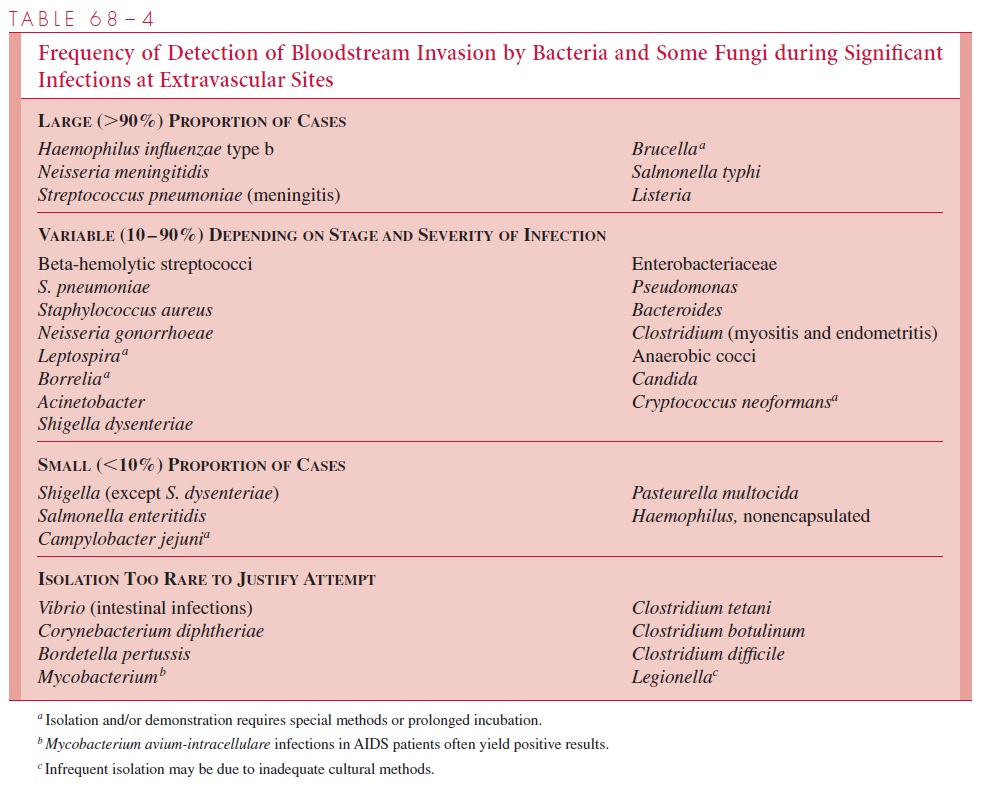Chapter: Medical Microbiology: An Introduction to Infectious Diseases: Intravascular Infections, Bacteremia, and Endotoxemia
Bacteremia From Extravascular Infection
BACTEREMIA FROM EXTRAVASCULAR INFECTION
Although bacteremia is an integral feature of intravascular infection, most cases of clinically significant bacteremia are the result of overflow from an extravascular infection. In these cases, the organisms drained by the lymphatics or otherwise escaping from the in-fected focus reach the capillary and venous circulation through the lymphatic vessels. De- pending on the magnitude of the infection and the degree of local control, these organisms may be filtered in the reticuloendothelial system or circulate more widely, producing bac-teremia or fungemia. The process is dependent on the timing and interaction of multiple events and is thus much less predictable than intravascular infection. If the infection is ex-tensive and uncontrolled, such as an overwhelming staphylococcal pneumonia, there may be hundreds or even thousands of organisms per milliliter of blood, a poor prognostic sign. An intra-abdominal abscess may only seed a few organisms intermittently until it is dis-covered and drained. Most infections that produce bacteremia fall between these extremes, with bloodstream invasion more common in the acute phases and intermittent at other times.
The causative organisms and the frequencies with which they usually produce bac-teremia (or fungemia) are listed in Table 68 – 4. There is considerable overlap, and the prob-ability of bacteremia is dependent on the site as well as the organism. Any organism producing meningitis is likely to produce bacteremia at the same time. Infections with H. influenzae type b are usually bacteremic, whether the site is the meninges, epiglottis, orperiorbital tissues. Meningitis caused by S. pneumoniae can be expected to be bacteremic, but only 20 to 30% of patients with pneumococcal pneumonia have positive blood cultures.

The most common sources of bacteremia are urinary tract infections, respiratory tract infections, and infections of skin or soft tissues, such as wound infections or cellulitis. The frequency with which any organism causes bacteremia is related to both its propen-sity to invade the bloodstream (see Table 68 – 4) and how often it produces infections. For example, cases of Escherichia coli bacteremia are common, attributable in part to the fact that E. coli is the most frequent cause of urinary tract infection.
Related Topics